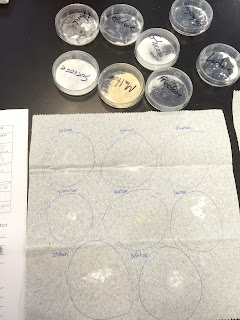This is a picture of cardiomyocytes that are about 1 month old under a microscope, taken by me in a lab at Stanford. Cardiomyocytes are heart muscle cells, and they are located within the human heart. Cardiomyocytes are 0.02mm wide and .1 mm long, making them short, narrow, and rectangular. Similar to a skeletal muscle cell, cardiomyocytes are marked with grooves of skinny dark and light bands. These cells contain one nucleus, and mostly have the same organelles of a typical eukaryotic cell, but they have many mitochondria, as they need a lot of energy in order to contract. One unique feature of cardiomyocytes is that there are irregularly spaced dark bands between the cells, which are called intercalated discs. They essentially act as a "glue" that allows all the cells to contract in unison. The main function of Cardiomyocytes is to contract, so that as a whole, it is the driving force that pumps blood and other nutrients to the entire body. These cells are also responsible for controlling a steady, constant rhythmic heartbeat. Cardiomyocytes form interlacing bundles that become heart muscles tissue, and these cells make up one of the three major types of muscles.
Please see Works Cited page for the resources that I used.

